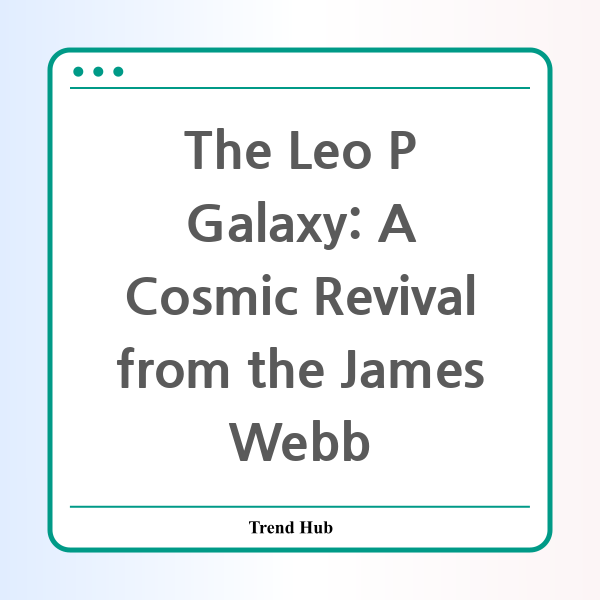* This website participates in the Amazon Affiliate Program and earns from qualifying purchases.

Have you ever wondered how ancient galaxies can still surprise us today? The James Webb Space Telescope (JWST) recently unveiled a stunning image of the Leo P dwarf galaxy, igniting excitement in the astronomical community. Located 5.3 million light-years away in the constellation Leo, Leo P is not just any dwarf galaxy; it is a relic from the universe’s early years, challenging our understanding of star formation and cosmic evolution.
Astrophysicists have long theorized that large galaxies, like our Milky Way, originated from smaller seed galaxies that merged and interacted over billions of years. During these cosmic interactions, stars formed from clouds of gas and dust, growing larger and more complex. However, Leo P defies expectations as it retains its primordial state, containing primarily hydrogen and helium, unchanged for billions of years.
One of the most captivating aspects of Leo P is its unexpected rejuvenation in star formation. Initially discovered in 2013, this irregular dwarf galaxy was believed to have ceased its star formation after the Epoch of Reionization, around a billion years after the Big Bang. This period marked a significant transition where the universe began to transition from a dark stage to one filled with light from the first stars. However, JWST’s advanced Near Infrared Camera (NIRCam) has revealed that Leo P has reignited its star-forming engines, a phenomenon thought impossible for such isolated galaxies.
What makes this discovery particularly intriguing is that while other similar galaxies showed signs of star formation ceasing and never resuming, Leo P has been observed actively forming new stars. This suggests a unique resilience to cosmic events that typically silence star production. The resurfacing of star formation in Leo P raises profound questions about how galaxies evolve over time and the conditions necessary for star formation to resume.
While Leo P is a solitary island in the vastness of space, it provides a window into cosmic history, allowing astronomers to glean insights into the early universe’s evolution. The JWST’s ongoing mission is to study four other isolated dwarf galaxies to further understand this unexpected revival in star formation and to reveal the mechanisms behind such resilience.
This new perspective on Leo P not only enriches our understanding of dwarf galaxies but also invites a reevaluation of the entire cosmic timeline. The study of such galaxies is crucial for piecing together the history of the universe, illuminating how matter coalesced into stars and eventually into galaxies as we see today. Leo P stands as a testament to the mysteries that the universe still holds, beckoning scientists to continue exploring and uncovering its secrets.
The ongoing research into Leo P and similar galaxies may not only change our knowledge of cosmic history but also expand our understanding of star formation processes. As we delve deeper into this celestial enigma, the Leo P galaxy continues to shine a light on the cosmos, revealing its timeless beauty and ongoing mysteries.
* This website participates in the Amazon Affiliate Program and earns from qualifying purchases.